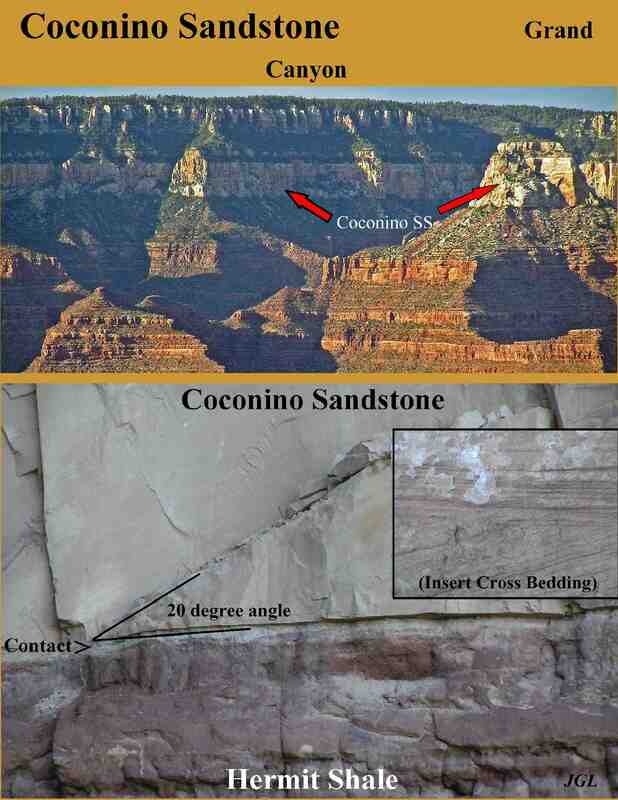"The Coconino covers much of northern Arizona, and along with correlating beds extends into other states, in all totaling at least 520,000 square kilometers. It is dated by evolutionists as within the Permian system, some 250 million years old. Similar Permian sand stones occur worldwide...According to Whitmore's reports, the deposit interfingers with other formations of unquestionable marine origin, implying that the Coconino is also marine. It bears fossil trackways and burrows best understood as being related to underwater activity, not to a dry, sand dune environment. Its sand grains are poorly sorted and somewhat angular, not at all like desert sands with well-sorted and rounded grains."
"Careful study shows the Coconino Sandstone simply does not have the same characteristics as modern desert sand dunes. Our multi-year study uncovered seven common myths about this rock formation. The observable facts support a much different conclusion: the sand was deposited underwater..."
1) "...underwater sand dunes that commonly occur today on the continental shelves have dips comparable to what we found in the Coconino..." (He noted that the current sand slope angles underwater are about 20 degrees.)
2) "The Coconino grains are sub-angular to sub-rounded, not ‘well-rounded..."(Well rounded found in modern sand dunes.)
3) "limited amount of sorting, as we would expect from underwater deposition" (Regarding sand gain size modern dunes have well sorted sizes.)
4) He commented on sand filled cracks in the Hermit Formation being sand injectites as there was no horizontal sand layering noted in the cracks. This could have occurred during earthquake activity and thus not due to drying.
5) Regarding tetra-pod fossil tracks "The experimental tracks that best matched the Coconino tracks were made underwater." ( He quotes L Brand's studies on tracks.)
6) "pock marks" seen in the Coconino SS are not consistent with raindrops made on dry ground.
7) "...sand grains of the Coconino are frosted, but their average size is so small that a mechanical cause is unlikely…probably chemical erosion..."


 RSS Feed
RSS Feed